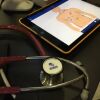Editor’s Note: In our June EMS1 Product Newsletter, we mistakenly ran the wrong link for “Best patient handling devices keep it simple”. You can find that article here.
Does it matter how advanced our pediatric clinical skills are if we can’t safely transport a sick child to the hospital? EMS agencies transport approximately 16,000 children every day. At the same time, there are about 4,500 ambulance accidents in the U.S. every year.
Many departments attempt to solve the problems by removing the shoulder straps on their stretchers when transporting pediatric patients, also rendering the restraint much less safe with adults. Even worse is that in many cases, children are still kept on the stretcher by little more than one or two horizontal straps.
This is a formula for disaster when the ambulance gets into an accident, even a minor one.
Fortunately, a number of great products have been developed in recent years to manage this problem. Here are a few of my favorites.
The first ambulance child safety seat I ever worked with is the Pedi-Pal folding car seat from Ferno. It was designed to transport pediatric patients weighing up to 40 pounds in an upright position.
It can be placed on a stretcher or in a backward-facing captain’s chair in an ambulance. I used to call it the origami chair because it folds from a flat storage position into a forward- or rear-facing child seat in seconds.
Its features include single-point size and restraint adjustments, an easy-to-clean surface and a five-point harness to make sure the child is secure. A big advantage is the rugged aluminum construction that will hold up for many years. Note that it cannot be used for spinal immobilization.
Another Ferno option is the Pedi-Mate. The Pedi-Mate is a soft restraint for securing children to a stretcher. It uses three restraint straps that attach quickly, easily and securely. It has a fully adjustable five-point harness system and secures children weighing 10-40 pounds.
Two similar products hail from Europe. The Kidy Safe child restraint from Clarke also has five harness straps. Two straps hold the child by the shoulders, another two hold the pelvic area and the last strap holds the inguinal region, preventing the child from slipping out of the device.
The second is the Ambulance Child Restraint, or ACR, from ParAid. It has a few features not found on similar devices: It comes in three color-coded sizes, which broaden the range of children who can be safely secured. It can be used on children about 10-100 pounds. It also features handy quick-release clips and a quick-release chest strap for when rapid medical intervention is required.
The Rescu-Air Air Filled Child Transport Seat from Emergency Products and Research is a second-generation design with improvements over the original inflatable car seat.
The Rescu-Air is rated for children 20-40 lbs and has an adjustable shoulder harness system. The one-piece steel frame inside is secured with quick-lock tabs, and the harness has both chest and pelvic straps.
The inflation valve system incorporates a “blow off” valve, which opens at 5 psi to vent to 3.5 psi working pressure. This ensures proper working pressure regardless of temperature or elevation changes. The only real limitation is that it is only certified as a forward-facing seat.
SafeGuard Transport is a simple restraint system for sick children on any brand of ambulance stretcher. This device is only intended for use on your stretcher. Think of it as a car seat adapter to make your stretcher a specialized pediatric transport platform.
It cannot be used as a spine board or a regular car seat. But for its intended purpose, it’s simply outstanding. The quality of construction and design is evident with every detail.
The transport can be used on kids weighing 22-100 pounds. It articulates with the head end of the stretcher. It’s fast to attach to your stretcher with just two simple clip straps. It’s also very easy to put the child on the transport with a single take-up for strap positioning convenience.
The last pediatric transport device I want to mention is the Guardian Pediatric Restraint System from Serenity Safety Products. This is really a replacement attendant’s seat with a hidden built-in child restraint.
The Guardian was designed from the ground up as a complete seating and restraint system for all ages. It eliminates the need to carry infants unrestrained or place larger children in adult restraints that don’t fit correctly. It is also an improvement over most existing head-end seats; it swivels and adjusts both backward and forward.
While you will still need a separate device for transporting children on the stretcher, it solves the problem of how best to transport a child in a seated position. I think it should be on every agency’s specifications for building out new ambulances.
We really have two different challenges when transporting children. Some are either accompanying an adult patient or can sit up. Then we have the sick children whom we need to transport lying down. These are two very different situations, which often require two very different solutions. That is why I think EMS departments should probably consider buying two different systems for each application.
The good news is that we have more choices today than ever before for the challenge of keeping our most precious little cargo safe, no matter what happens on the way to the hospital.


